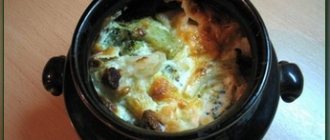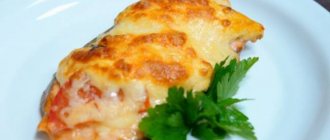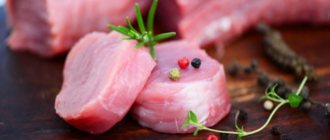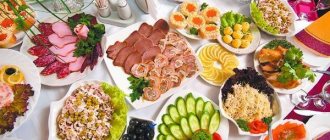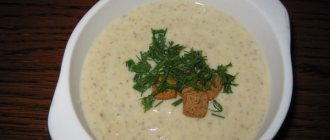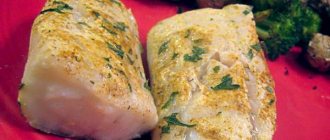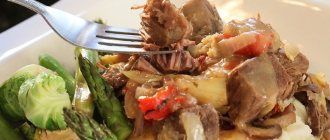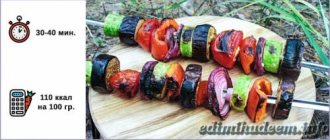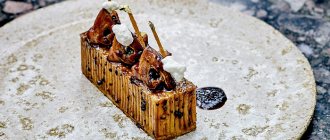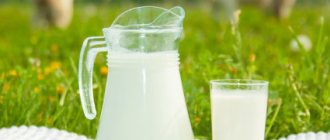Children, like all people, need to eat fish from time to time, at least once a week. Kids can't eat any fish - only white and lean ones. Fish like pollock is best cooked for children. It has everything you need for which fish is usually cooked, and, moreover, its meat is dietary and low-fat. Of course, kids don’t always want to eat what their parents give them, but there are so many cooking methods that you can always come up with something to make even fish an attractive food for a child.
The value of pollock for a child
Why do children eat fish, in particular pollock, beneficial properties and microelements of this type:
- In addition to the well-known phosphorus and calcium, pollock contains many other vitamins and beneficial elements;
- Thanks to all the beneficial properties of pollock, you can avoid the following diseases: thyroid problems, caries, low or high blood pressure, fractures, high sugar and cholesterol levels and others;
- Eating fish regularly replenishes the body with many useful substances;
- With the help of pollock, many life processes can be regulated;
- Those substances that are present in fish help other elements to be absorbed.
The only contraindication is an allergy to fish and seafood.
Children under one year of age are not given fish more than once a week, and on the day you cook pollock for your baby, do not give other meat.
To make children want to eat a fish dish, choose one in which its taste will not stand out too much. We offer you different recipes to choose from:
How to choose
Pollock is a very healthy product; it has a high content of iodine, which is very important for the full functioning of the human body. It is approved for introducing complementary foods to children from the age of 7 months. In addition, it is an important part of the diet, as it does not contain fat.
Before you cook fish, you need to choose it correctly. On store shelves, fresh frozen fish is most often present in two versions: fillets and whole or headless carcasses. If you choose a fillet, you should pay attention to the ice crust covering it; it should not be thick and frozen; you need to take a product with an even, smooth glaze. The color of the meat is also important; it should be white without any shades or spots.
The smell of fish should not be sharp and intrusive; this indicates improper storage and frequent defrosting of the product; it is no longer useful. Regarding the manufacturer of the product: it is worth giving preference to domestic suppliers rather than Chinese ones. This can be determined by size; it should not be less than 20 cm.
Puree
Fish puree is made, like other dishes for children, from fillet. For children under one year old, boil the fish for at least 20 minutes, and then grind it in a meat grinder or blender with the addition of milk and a small amount of salt. After this, you can cook the puree for a couple more minutes.
To make it tasty for your child, for the first time mix a little fish puree with the one that the child loves and eats with pleasure, gradually add more, usually getting used to a new product comes in two weeks, during which the fish will be mixed daily with something familiar. In this case, puree is exactly the dish that will help children get used to fish unobtrusively.
Good to know
Despite the simplicity of cooking pollock, you should know a few nuances that will help you better navigate when preparing this product.
- Cod fish is able to absorb the aromas of additional ingredients, so to preserve its own taste, it is recommended to boil the fish in salted water with the addition of one spice - bay leaf.
To give a simple dish a more piquant taste, you can add sprigs of herbs (dill or parsley), peppercorns, an onion and a slice of lemon to the cooking water.
In order not to spoil the fish fillet or overcook it, you only need to place the carcass in boiling water and cook the product without a lid.
An individual allergy to pollock is the main contraindication to its cooking. This cod caviar also contains a huge amount of salt, so it is harmful to peptic ulcers and hypertension.
Souffle
Pollock soufflé can also be considered one of those dishes with which one begins to get acquainted with fish products. The beginning of preparation is the same as for puree - cook until tender and chop.
Add a raw egg, salt and a teaspoon of slightly melted butter to the boiled fish mince.
Boil milk, add flour to it at the rate of flour and milk 1:5. Stir and cook, stirring until you get a thick sauce. We also add this sauce to the fish mixture.
Usually the souffle is laid out in molds if it is made in the oven. True, it is difficult to monitor readiness so as not to dry it out. It’s much easier to cook fish soufflé in a slow cooker - you just need to set the “Baking” mode and wait until it finishes.
Other ideas and recipes
Pollock is a low-fat fish without its own bright taste. Therefore, it goes well with various foods and sauces, imbuing them with their aromas. In dietary and children's kitchens, pollock is steamed. The fish turns out soft and combines harmoniously in salads with arugula, mustard, and lemon oil. And to fry the fillet while maintaining its juiciness, use the option of frying in batter. Pollock in batter is deep-fried, which results in a dish with a crispy crust on the outside and juicy meat on the inside.
It’s also delicious to cook other seafood in batter:
- Battered sole is an inexpensive product that is tasty both hot and cold.
- Lovers of something more exotic can cook shrimp in batter. Served with garlic sauce, these shrimp will serve as an appetizer on their own.
- Another appetizer option is squid in batter. Squid fillets are cut into rings and deep-fried, resulting in a beautiful, appetizing appetizer.
- Such familiar food as crab sticks is suitable not only for salads. Try crab sticks in batter with cheese and you will discover new facets of this product.
Pollock cutlets for children
Fish cutlets will be relevant for children after a year, when they already have teeth and the child knows how to cope with meat foods. They can be made with bread or rice to make the cutlets more tender.
Turn raw fillet into minced meat in a meat grinder. Soak the bread in milk or kefir in advance and add to the minced meat.
If you want to make it with rice, it should be cooked until half cooked, and bread and milk can be replaced with a raw egg. True, these will already be meatballs!
Pour some flour into a flat plate and use it to form cutlet balls.
Place the cutlets on a baking sheet if you are going to bake them, or in a deep frying pan. You must first fry a little on all sides so that the cutlets set and do not fall apart, and then add water or pre-prepared meat/fish broth and simmer. You can sprinkle with turmeric. A multicooker is an alternative to the oven.
How and with what side dish to serve
Finished fish must be served immediately on the table - this can be done either as a separate dish or with a side dish. Pollock goes well with cereals (rice, buckwheat are the best choice), which can be boiled. Potatoes will also work (choose boiled or mashed). Pasta is considered an unsuitable side dish for pollock - but this is a matter of taste and personal preferences of each individual person. For example, in many countries they like to eat white fish with spaghetti in tomato sauce.
Pollock goes well with vegetables. In addition to the fact that they best highlight the taste of the dish, such a side dish will be considered complex, which you will certainly be able to surprise your loved ones or guests. It’s also difficult to make a wrong choice here – everyone eats vegetables. They can be used in any form - fresh, stewed, baked or boiled. Let's look at what types of vegetables are best suited for this type of fish.
Stewed tomatoes
They are perfect as a side dish for pollock, or any white fish. This side dish is considered low-calorie - 100 grams of tomatoes contain a minimum of calories. In addition to the confidence that this dish will definitely not harm your figure, vegetables are rich in lycolene content. According to doctors, this substance copes well with the prevention of endocrine and cancer diseases, and heart problems.
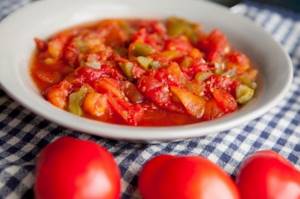
Don't forget to wash the tomatoes, then cut their bases and rinse them with a small amount of boiled water. This will make it easier for you to peel them. Heat a frying pan and add a piece of butter, as well as pre-chopped onion. Pour in vegetable oil, add a couple of cloves of garlic and pre-cooked vegetables.
Fish soup
Fish meatballs are usually added to the fish soup for kids, the preparation of which is no different from the recipe above. For children from 8 months, add some potatoes and carrots to the soup. If you don’t have teeth yet, then you don’t have to make cutlets, put the fillet in the soup, and when the soup is ready, grind it, turning it into a puree soup. Children from one and a half years old can make a full-fledged soup. If you puree the soup, add fresh herbs to it.
Do not forget that children should only be given fresh fish; it is better not to use frozen fish or those that have been in the refrigerator for several days.
Children need to prepare everything immediately before meals - do not leave half-eaten children's soup or cutlet for another day, it is better to eat it yourself and make a new one for tomorrow.
Do not add too much salt - children are not yet accustomed to salty foods and will eat lightly salted dishes just fine. It’s better to add natural spices - turmeric, pepper, cumin and others.
Do not add mixed store-bought spices with flavor and aroma enhancers or additives with the letter E to baby food.
If a child does not want to eat a certain product, “disguise” it.
How and how much to cook
The cooking time for pollock will depend on how you cook it. There are many of these methods, but we will consider the most used by Russian housewives. These are traditional pots and pans, as well as a multicooker that has become so popular in recent years.
If you decide to cook fish in a pan, it will take no more than 15 minutes (longer - it will break down into small fibers). Pour enough water into the pan to cover all the fish, bring to a boil and carefully lower into the water. Reduce heat, add salt, a few bay leaves and cook for 10–15 minutes. Do not forget that the fish absorbs the broth well - to preserve the taste of the pollock, try not to add a lot of spices.
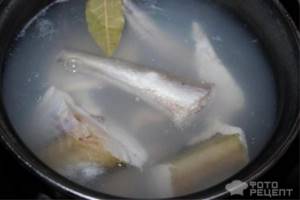
If you decide to cook fish in a double boiler, then you will need 30 minutes. This method is good because it is the most gentle compared to others and preserves the maximum possible amount of useful components. Please note that this is the method of preparing fish that is recommended by doctors if you are starting to feed your child complementary foods, as well as by nutritionists if you have problems with excess weight.
Cooking pollock in a multicooker is even easier than in a regular saucepan: place the fish carcass on the multicooker rack (usually they come included), pour water into the bowl and cook for 30 minutes. Use the “Stew”, “Baking” or “Steam” mode. After the fish has been cooked for 15 minutes, open the multicooker lid and add spices, then cook for another 15 minutes. But there is another way - to salt the water right away, so that later there is no need to open the lid. This way you do not release the steam needed for cooking from the multicooker and are not distracted from other matters.
When cooked, pollock often turns out dry. To avoid this, you need to fry it first. Carefully place pieces of pollock on a hot frying pan, having first rolled them in flour. If you don’t want to use flour, you can replace it with oatmeal or fiber. It turns out no less tasty.
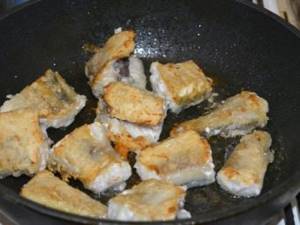
Recipe: Fish with vegetables for children - Simple pollock for children with sour cream
potatoes - 6 pcs;
pollock fillet - 1 fish;
onion - 1 piece;
bay leaf - 1 leaf;
Sometimes you can prepare a simple, ordinary, but no less tasty menu for children.
I want to offer you my version of cooking
Peel, cut into cubes and boil the potatoes
I don’t salt water or potatoes at all; salty gravy with fish will be enough.
While it is cooking, take the pollock fillet, wash it and cut it into 3 parts, if the fish is large, then into 4
We need to boil the pollock fillet in lightly salted water
I usually remove the foam
Then I add chopped onions, sour cream, spices, bay leaves and cook until the fish is ready
I stir until it becomes liquid and pour it into the almost finished fish. Cook for a couple more minutes.
I drain the water from the potatoes and add dill to the potatoes.
and I remove the pan with the fish from the heat, take out the fish, and while it cools
I strain the liquid from under the fish into a deep bowl, it should turn out thick, this is fish gravy)))
I clean the fish itself from the bones and put it directly into this gravy
After cleaning all the fish, I add more dill.
https://fotorecept.com/review_355130.html
How to cook pollock deliciously in a double boiler?
To cook fish truly tasty, you have to try a little. It works best in a double boiler, although this approach takes more time. To save it, you should not use pieces of the product, but fillets that have been cleared of all unnecessary fillets.
- For 700 g of pollock we need lemon, 3 bay leaves, 3 allspice or black peppercorns, a couple of onions, 0.5 teaspoon of salt and several sprigs of dill. Dill can be replaced with parsley, then the aroma of the greens will be more pronounced.
- Wash the fish, clean it, cut off all excess. Work is carried out with clean fillets or portioned pieces. Peel the onion and cut into half rings. We chop the greens or at least tear them off the branches. Wash the lemon and cut it together with the peel into very thin slices, removing the seeds.
- Place the onion, pepper and bay leaf in an even, continuous layer in the steamer bowl. Next comes a layer of fish, which we add. Place lemon on top and sprinkle with herbs.
- We start the steamer for 30-40 minutes, depending on its power and heating speed. Don't worry about the product being overexposed; it won't make it any worse.
To make the dish not only tasty, but also fully consistent with individual preferences, you can try adding your own ingredients or replacing existing ones with them. The main thing is not to use too fragrant herbs and spicy seasonings, they can interrupt the natural aroma and taste of the fish.
Beneficial features
If you regularly consume pollock, you can get the following benefits:
- blood sugar levels decrease;
- the functioning of the thyroid gland is normalized;
- the condition of the nervous and digestive systems improves;
- teeth and bone tissue are strengthened;
- the condition of bones, nails and skin improves;
- blood cholesterol levels decrease;
- blood pressure and metabolism return to normal.
If you consume 100 g of this healthy product, you can fill the body’s daily need for iodine, chromium and cobalt. Iodine is necessary for the effective functioning of the thyroid gland, which ensures the normal functioning of all organs and the well-being of the person himself. Cobalt produces a hemostatic effect and regulates carbohydrate metabolism.
It also promotes normal absorption of iron, which can prevent the development of anemia. Chromium is a necessary element to ensure normal carbohydrate and lipid metabolism in the human body.
The calorie content of this fish is low (70 kcal per 100 g), which allows you to include it in your diet without worrying about your figure.
Delicious Pollock in the oven with a crispy crust
Cooking tips
Pollock is actually not a fatty fish, and to maintain its juiciness when baking, you need to know some tricks.
- Never defrost pollock in warm water or in the microwave. If defrosted incorrectly, the fish will be loose and dry, and you won’t be able to make a tasty dish out of it even according to the best recipe. Defrosting with a minimum temperature difference would be correct. That is, first the fish removed from the freezer should be placed on the top shelf of the refrigerator, then moved lower, and only after it has completely thawed, should it be allowed to warm up slightly at room temperature. Only after this can you start cooking.
- Fish should also be cut correctly. If you purchased uncut pollock, you should clean it, gut it, cut off the fins, wash it and dry it with a napkin. If you are not a master at cutting fish, then it is better to buy headless carcasses, which you just need to wash and blot dry.
- In order for a pollock dish to be juicy, it is advisable to include a rich sauce and a large number of vegetables. Onions and carrots go perfectly with pollock.
- If you want to make the dish dietary, you will have to avoid mayonnaise when baking pollock in the oven. You can replace it with unsweetened yogurt or low-fat sour cream.
- Try not to exceed the recommended cooking time for the fish, otherwise it may dry out.
- Of course, a delicious dish can only be prepared from high-quality ingredients. When buying pollock, look at the production date, the thickness of the glaze (it should not exceed 2 mm), and the color of the meat (it should be white).
Once you are sure that the fish you have chosen is of high quality, and you already know the secrets that will help you cook it correctly, you can calmly study several recipes to find the one that best suits your taste.
Contraindications for the use of this product
This product can be given to a child up to one year old, starting at 8 months of age. A child's introduction to fish should take place when he has completely mastered meat. First, offer him half a teaspoon of boiled fillet.
How much pollock to give your baby next time depends on how he handled his introduction to it. If the child does not have an allergic reaction, then gradually increase the amount of fish to 50 g per day. Otherwise, limit consumption of this product for 2-3 weeks. After this period has expired, try offering it to your baby again using the same scheme.
Also remember that a baby under one year old should not be given fish and meat on the same day. Separate these foods so as not to create a large burden on the child’s digestive system.
Pollock with onions and carrots step by step photo recipe
Pollock prepared in the manner described below almost never becomes boring and is stored well in the refrigerator, so it can be prepared for a week. The recipe itself has been tested many times, so I’m happy to share it.
We'll start cooking with fish. We wash the pollock, dry it, take a knife (or kitchen scissors) and cut off all the fins from the fish and chop off the tails,
Next, I highly recommend cleaning the abdominal cavity of the fish, even if it suddenly seems to you that you purchased the fish cleaned. We cut the belly, unfold it like this, and very carefully clean and scrape out with a knife this black film, which (I hope) is clearly visible in this recipe photo,
After the previous procedure, the pollock belly will look something like this.
Cleaned and freed from all fins, cut the pollock carcasses into 3-4 pieces (depending on the size of the fish), throw the fish into a deep bowl, add spices, salt, black pepper, squeeze out the juice from a third of the lemon,
Add a little olive oil,
And mix the fish thoroughly with your hands so that the marinade is evenly distributed over the entire surface of the prepared pieces of pollock. Let the fish marinate for about 20 minutes before frying, while we prepare the vegetables.
Peel the carrots and onions.
After the marinating time has passed, roll the fish thoroughly in flour.
Pour a little vegetable oil into a deep frying pan (so that there is less splashing), and as soon as it heats up well, fry the first batch of pollock, first on one side,
And then, fry the fish on the other side. As you can see in this photo, the fish is fried in a frying pan until beautifully golden brown. It is not at all necessary to cook pollock more than is necessary to obtain this crust, since fried pollock will still be stewed with onions and carrots, and therefore, if it did not have time to cook at this stage, it is absolutely guaranteed to arrive later.
Fry the remaining batches of pollock in a frying pan as described above. Place all fried fish in a separate bowl.
Next, clean the frying pan from used oil, heat it well, pour in a little vegetable oil, cut the onion into medium-sized cubes, and fry it until translucent.
Add the carrots, grated on a coarse grater, to the onion and simmer the vegetables together for another 10 minutes under a closed lid, remembering to stir them periodically. About halfway through this stage, you need to pour about 100 ml into the pan. boiling water, it will be better for vegetables to stew with them.
After ten minutes of stewing the onions and carrots, add a couple of tablespoons of 9 percent vinegar to the vegetables (this is for my taste, you can, of course, do without it), stew the vegetables for another 5 minutes,
Then, using a spatula, we “introduce” the previously fried pollock into the vegetable frying. In the photo I tried to depict this stage... everything is simple there!
You need to try to ensure that the fried pollock is almost completely covered with the vegetable frying. At the end of this procedure, you can pepper the dish again, cover with a lid and simmer for 10 minutes under a closed lid. Now for sure, our fried-stewed pollock is completely ready.
And it can be served immediately! Since the fish is cooked with a lot of carrots and onions, they serve as a side dish, but if desired, you can serve pollock prepared in this way with mashed potatoes, this will also be very tasty.
Well, this is a close-up photo of pollock with onions and carrots. Bon appetite!
Dish recipes
This fish is very easy to prepare. This can be done in a slow cooker, oven or in a regular saucepan. All these dietary dishes will be healthy for babies up to one year old. How much to give a child of the finished product depends on his age.
Fish puree
This fish dish is the first to be introduced to a baby under one year old, since it contains a minimal amount of ingredients. The puree recipe is as follows:
- Place the fish in a saucepan. It needs to be boiled for 15-20 minutes in salted water. You can do this in a slow cooker.
- Cool a piece of fish, then pass it through a meat grinder.
- Add a little milk to the finished puree.
- This mixture should be simmered over low heat for 1-2 minutes.
Fish soufflé
The recipe for this dish is as follows:
- Boil a piece of fish (100 g) until tender in salted water.
- Grind it using a meat grinder or blender.
- In a separate saucepan, bring the milk to a boil with a small amount of flour to obtain a thick sauce. How long to cook it depends on the amount of ingredients. For 25 g of milk, take 6-8 g of flour and cook for 1-2 minutes.
- Add cream sauce, 1/3 egg and 5 g butter to the minced meat. The white should be beaten separately and carefully added to the resulting mixture.
- Place the soufflé in a mold and finish cooking in a slow cooker or oven.
Fish meatballs
Pollock cutlets or meatballs are best steamed in a slow cooker, baked in the oven or boiled in a saucepan. To understand how long to keep a dish on the fire, look at its consistency. The cutlets should be dense and not fall apart. The recipe looks like this:
- Pass raw fish through a meat grinder (100 g).
- Add 30 g of white bread soaked in milk. To ensure that the cutlets have a uniform consistency, pass the minced meat and bread through the meat grinder again.
- Add 1/3 egg, salt. Form small cutlets.
- They can be cooked in a slow cooker or steamed in a saucepan for 15-20 minutes. The cutlets are also baked.
Nutritious soup
It is recommended to give soup from this fish to children after 1-2 years of age. It is very nutritious and tasty. Cutlets, the recipe for which you can see above, are added to the soup as meatballs. They are prepared separately and added as a side dish to the first course. The soup itself must be cooked from a piece of fish and vegetables. Recipe of dish:
- Cook fish broth in a slow cooker or regular saucepan. The main ingredients are fish, carrots, onions, potatoes.
- Salt the finished dish, you can add a little parsley and dill.
- Pour the soup into a plate and add a few boiled meatballs.
How to cook pollock
Regardless of which fish recipe you choose, follow these rules:
- soup should not be given to children under 1 year of age;
- if you prepare soup, cutlets or soufflé from whole fish, carefully remove all bones;
- defrost this product in the refrigerator;
- Do not cook fish soup on the bones. To do this, use exclusively pieces of meat.
Let's try the fish. Where to begin?
Fish should be introduced into the diet of a healthy baby approximately 3-4 weeks after the introduction of meat complementary foods, that is, at 9-10 months. However, it must be taken into account that fish is one of the most powerful food allergens, so children with allergies begin introducing fish dishes into their diet after 1 year and with extreme caution. Ideally, especially in children with a pronounced allergic predisposition, the start of fish complementary foods is agreed upon with the allergist who is observing the child.
To introduce your child to fish, low-fat varieties are suitable: haddock, cod, pollock, flounder, hake. You can cook fish at home or use ready-made canned fish for baby food. You should start with ¼ teaspoon, usually in the form of fish puree, preferably during one of the morning feedings, so that you can carefully monitor the baby until the evening. Allergic manifestations may take the form of skin rash, regurgitation or vomiting, and stool disorders. As a rule, they are observed several hours after encountering the allergen.
Sometimes allergic reactions develop only to sea fish or, conversely, only to river fish.
If you notice certain allergic manifestations in your baby after you gave him a taste of a fish dish, you should refrain from further acquaintance with this variety. Wait a week or two, offering your baby only those foods that he is already accustomed to. After the condition returns to normal, you can try giving him a different type of fish. Sometimes allergic reactions develop only to sea fish or, conversely, only to river fish. Often children who are allergic to one type of fish can easily tolerate other types. It may also happen that the same type of fish, say, causes allergies when prepared at home, but is well tolerated in canned (that is, industrial) form, or vice versa.
If the first meeting went smoothly and you did not notice any negative manifestations, the next day you can offer your baby 1 teaspoon of fish. If everything is fine in this case, you can gradually increase the daily dose to the age norm. In one feeding, a child aged 9-10 months can eat about 50 g of fish, by 11-12 months you can offer him up to 60-70 g. Fish proteins have one more property: an allergy to them is often associated with an accumulation effect. This means that if you offer fish dishes too often, the risk of developing allergic reactions to them increases significantly. That is why fish products should be offered to your baby no more than 2-3 times a week, and to potential allergy sufferers (of course, those who can tolerate a specific type of fish) - once a week.
Beware of allergies!
You should be especially wary of immediate-type allergic reactions (they appear almost immediately after eating), which, although rare, unfortunately, can occur when eating fish. The most harmless of these reactions is urticaria. More serious symptoms include redness and/or swelling of the lips shortly after eating, and hoarseness. Such symptoms may be signs of development - a dangerous condition characterized by swelling of the tissues of the face, and in 20% - of the mucous membrane of the larynx, making breathing difficult.
If you suddenly notice anxiety in your baby, pallor or bluishness of the face, combined with difficulty breathing, immediately call an ambulance and give the child any antihistamine (for children under 3 years old, ZIRTEK or FENISTIL drops in an age-appropriate dosage are preferable). If you notice an immediate allergic reaction in your baby, you should be extremely careful in the future if you start preparing this type of fish for other household members. Fish is in a sense a unique product: an allergic reaction can occur just from its smell! The fact is that usually the smell of food is caused by volatile low-molecular compounds that are practically incapable of causing an allergic response. But the fishy smell is caused by protein molecules and therefore can cause an allergic reaction in predisposed people.
Fish products are replaced on selected days with corresponding meat dishes. At first, it will be easier for your baby to cope with fish puree; later it can be replaced with fish puddings, fish balls or steamed cutlets. At 1 year old, the baby can already be offered boiled or baked fish prepared for the rest of the family. In all cases, you should carefully remove all the bones from the fish, even the smallest ones, because the baby is not able to separate them on his own and may choke. Try not to offer your baby fatty fish, as they can cause intestinal upset. Fish broths are not used in baby food until about 3 years of age: they are too saturated with extractive substances, which are unnecessary stimulants for the immature digestive system of babies, and do not have particularly valuable properties. Also, children under 3 years old are not offered caviar and seafood, as dishes with a high allergenic potential.
Culinary secrets of cooking fish
- It is better to thaw frozen fish in salt water (8-10 g of salt per 1 liter of water): this reduces the loss of minerals that is inevitable during defrosting. It is generally not recommended to completely defrost fillets. Slightly thawed fish are washed in cold water and cooked.
- Fish cooked whole or in large pieces is always tastier and juicier. The less liquid taken for cooking, the better the result will be. Steamed fish will retain the greatest amount of nutrients.
- Many chefs recommend poaching as the main method of cooking fish, primarily sea and ocean fish. This is the name for boiling fish in a small amount of water with one or another flavoring additives - butter, lemon juice, herbs and spices (onions, carrots, parsley or celery root, dill, bay leaf). In this case, the loss of valuable nutritional properties is minimized, and the taste of the fish is significantly enriched and refined. Only “red” fish is often cooked without spices. Poaching time for portioned pieces is 10-15 minutes, for large fish - from 25 to 45 minutes.
- When cooking or poaching, it is better to lower the fish into already boiling water, then immediately reduce the heat. Fish cooked over high heat becomes overcooked and tasteless.
Video: Pollock fish in a slow cooker
The baby has grown up, he has already mastered cottage cheese, porridge and, finally, the time has come to introduce him to fish - so at what age should he do this and what fish products should he start with?
Since for the first acquaintance, pediatricians recommend low-fat varieties, and then the question arises, is pollock suitable as complementary food for a 1-year-old child? After all, from this fish, which lives in the Atlantic and Pacific oceans and belongs to the cod family, you can prepare many tasty and healthy dishes.
Just like meat, eggs and dairy products, fish is a source of high-quality protein. But fish proteins, unlike meat proteins, are much easier to digest, and besides, there are no films or fibers in the fish pulp, like in meat. It contains a large amount of vitamins and microelements.
Pollock is a dietary fish and contains many nutrients:
- Proteins (15.9 g per 100 g of product);
- Fat (0.9 g per 100 g of product);
- Vitamins – A, B1, B2, B6, B9, C, E, PP;
- Microelements – iron, copper, zinc, manganese, fluorine;
- Macroelements – potassium, calcium, sulfur, phosphorus, iodine.
Useful properties of pollock for a child
With regular consumption of pollock:
- The functioning of the thyroid gland is normalized.
- Teeth and bone tissue are strengthened.
- The condition of nails and skin is normalized.
- Sugar levels decrease.
- Metabolism is normalized.
- Cholesterol levels are reduced.
- Blood pressure is normalized.
- The development of anemia is prevented.
- Due to its low calorie content, weight loss occurs.
How long does it take to cook pollock?
The cooking time for pollock primarily depends on the form in which the fish is cooked (fillets, small or large pieces with bones), as well as on the chosen cooking method:
- How long to cook pollock fillet?
On average, the cooking time for pollock in a pan (fillet or whole fish cut into pieces) is 10 minutes after boiling water in the pan. - How many minutes should I cook pollock in a double boiler or slow cooker?
Pollock fish can be quickly cooked in a double boiler or in a multicooker using the “Steam” mode in 10-15 minutes (depending on the size of the fish pieces).
Note: in the store, pollock is often presented frozen, so before cooking it is better to defrost it in advance so that it cooks evenly and does not become mushy.
Having learned how long to cook pollock fish, we will next consider how to properly boil it in a saucepan so that it turns out tasty and cooks quickly.
How to cook pollock in a pan?
Due to its taste and almost no bones in the meat, pollock is often prepared for any side dish, and young mothers cook it for their child. Let's look at the easiest and fastest way to cook pollock deliciously so that all the taste of the fish is preserved:
- The first step is to defrost the fish in advance (take it out of the freezer a few hours before cooking, at room temperature).
- If the fish is purchased whole, then it is necessary to cut it up: we clean it from scales, cut off the head, tail and fins, rip open the belly and take out all the insides, after which we thoroughly rinse the carcass with cold water. Next, the carcass is cut into pieces 2-3 cm thick; if fillet was purchased, then it is also cut into longitudinal pieces 2-4 cm thick.
- Place the prepared pollock in pans and fill with water so that it completely covers the fish and the water level is several centimeters above the fish, and over high heat, bring the water in the pan to a boil.
- After the water boils in the pan, reduce the heat, add 2-3 bay leaves and salt to taste to the water.
- Cook the pollock for 10 minutes until cooked (if you are cooking fillets cut into small pieces, the cooking time can be reduced to 5-7 minutes).
- We take the cooked pollock out of the pan onto a plate and serve. You can also prepare or use ready-made fish sauce for the fish.
In conclusion to the article, it can be noted that there is nothing complicated in cooking pollock at home, the main thing is to know the cooking sequence and how long to cook it after boiling the water in the pan. We leave our reviews and useful tips on how to boil pollock deliciously in the comments to this article and share it on social networks if it was useful to you.
Pollock is a Pacific fish of the cod family, which is rich in proteins and iodine that are easily digestible in the human body. Due to its high nutritional properties and minimal amount of bones, pollock is an indispensable product in baby food. It is useful for all ages and is actively used in preparing dishes for weight loss, because... Pollock is a dietary fish variety.
How to eat pollock for a 1 year old child
Pollock can be introduced into the diet of a healthy child before 1 year of age, approximately 3-4 weeks after introducing meat into complementary foods, i.e. at 10 months.
Usually start with ¼ teaspoon of fish puree in the morning to monitor the baby's reaction. Allergic manifestations, if any, are usually observed within a few hours after eating. In this case, you need to exclude fish from the baby’s diet.
If no allergies were noticed and there were no negative manifestations, then the next day you can offer 1 teaspoon of fish puree and gradually increase the dose. By the age of 1 year, a child can eat up to 60 grams of fish, but not more than 1-2 times a week.
A few simple rules for complementary feeding for mothers
- The start of fish feeding should be agreed upon with the pediatrician.
- Introduce pollock into your child's diet carefully, in small portions, to avoid allergic reactions.
- To avoid unnecessary stress on the digestive system, you should not feed both meat and fish on the same day.
- Be extremely careful to remove all bones from the fish, even the smallest ones, since a child cannot separate them on his own and there is a danger of choking.
- Do not introduce fish broths into your child’s diet until about 3 years of age - they contain too many extractive substances that are dangerous for the immature digestive system of children.
Do babies need canned fish?
To feed their babies, some mothers purchase special commercially produced canned fish for children. Such canned food contains not only fish, but also vegetables, cereals, and ascorbic acid is used as a preservative.
But it’s better, of course, to prepare fish dishes for your child at home.
Fish in a child's diet
Dear reader!
This article talks about typical ways to solve your issues, but each case is unique! If you want to know how to solve your particular problem, ask your question. It's fast and free
!
Fish contains many nutrients, so it is simply irreplaceable for a child (more details in the article:)
Typically, fish meat is introduced into the diet of children aged 1-1.5 years. At this time, they gradually become familiar with food familiar to adults. It is best to start cooking with minced fish. Chewing such food will not cause any particular difficulties for children. If fish is not an allergen for a child, it can be given to a one and a half year old baby no more than twice in a seven-day period. It is not advisable to combine fish and meat products on the same day. This greatly overloads the toddler’s digestive system.
To prepare fish cutlets for small children, especially one-year-old children, you should choose varieties with minimal fat content, for example:
- pollock;
- bearing;
- zander;
- cod;
- pink salmon;
- crucian carp;
- carp and others.
It is advisable to use a refrigerated product. Before passing fish through a meat grinder, it is necessary to check and remove even the smallest bones from it.
For children you need to choose low-fat varieties of fish
How to make fish puree from pollock
Fish puree is suitable for children under one year old because it contains a minimal amount of ingredients. It is not difficult to prepare such a dietary dish from pollock - in the oven, slow cooker or saucepan.
Fish puree for children from pollock, step-by-step recipe
- We thoroughly wash the pollock fillet and boil it in a small amount of water for 20-30 minutes.
- Cool slightly.
- Pass through a meat grinder or beat in a blender until mushy.
- Add a little milk and a piece of butter to the resulting mass.
- Stir and bring to a boil over low heat.
- Store the finished puree in the refrigerator for no more than 2 days.
So, fish dishes should not be introduced into your baby’s diet ahead of time, because fish is one of the strongest allergens. Before the baby tries it, you need to accustom him to other foods, after consulting with your pediatrician. Being a dietary fish, pollock is suitable as complementary food for a 1-year-old child.
Pollock is the most common fish from the cod family in the waters of the seas and the Pacific Ocean. This delicious fish is one of the most popular products in Russia and throughout the world.
Pollock fillet is rich in phosphorus, iodine and vitamins, and pollock liver contains more vitamin A than the famous cod liver. Pollock is a real treasure trove of iodine and protein, which is very easily absorbed by the human body.
This fish is very useful for children, especially in the first few years of their life, during the period of active growth of the body. Eating pollock is very important for pregnant women and young nursing mothers. In addition, pollock dishes are easy to prepare and very tasty. How to cook pollock, the most popular and one of the healthiest fish?
Since preparing pollock deliciously is not a difficult task (even just fried pollock in oil already becomes an appetizing dish), we will pay attention to original and unusual recipes for preparing this fish.
How to cook pollock in a pan?
In the case of using the traditional method of boiling fish, the first priority is exactly how long to cook the pollock to the desired state. Before work, the component must be cleaned of scales and entrails. We also cut off the head, tail and fins. It is better to separate the fillet from the frame, but you can simply cut the fish into several portions.
To make it delicious, do the following:
- Place the pieces of fish in any container and fill with water, completely covering the workpiece. We check what volume of liquid was used and pour the same amount of fresh water into the cooking pan. Bring the liquid to a boil over high heat.
- Dissolve the salt in the water, add a few bay leaves, and reduce the heat to medium.
- When the mixture boils again, put the fish in it, which we cook for exactly 10 minutes.
- We take the product out of the pan, put it on a plate and use it for its intended purpose. If the pieces are large, you can keep them in a dry, warm bowl with a lid for a while so that they are definitely cooked.
Pollock, boiled in broth, has a dense but pleasant texture and a clean taste. If desired, it can be subjected to additional processing: stewing with vegetables, baking with sauce, frying in aromatic dressing.
How to cook pollock in the oven with vegetables and sour cream
- Pollock - 1 large fish;
- Onions - 2 onions;
- Carrots - 2 pcs;
- Sour cream to taste (best - 3-4 tablespoons);
- sunflower oil
- Salt, spices for fish (you can use special lemon spices).
Preparation:
- Chop the onion into small cubes, and peel and grate the carrots on a coarse grater or cut into thin strips. Fry the onions and carrots in sunflower oil until tender.
- Clean the pollock from giblets, cut off the fins, head and tail, cut the carcass into small pieces.
- Place the pieces of fish in a frying pan or dish with a thick bottom, sprinkle with fried onions and carrots, salt and sprinkle with spices to taste. Pour sour cream over the fish and place everything in the oven for half an hour.
- The finished dish can be sprinkled with fresh herbs.
How to properly cook pollock in milk?
A very special result is obtained by boiling fish in milk. This approach does not require much time to implement, and in the end everything turns out very tasty and unusual.
- For a couple of fish we will need a glass of water and medium-fat milk, a head of onion, a couple of carrots, salt and spices to taste.
- We don’t just clean the pollock, we separate the fillet and cut it into small cubes with edges no larger than 1.5 cm. Fry the workpiece in a frying pan without using oil or with a minimal amount of it.
- Peel the carrots and grate them on a coarse grater. Peel the onion and finely chop it.
- We take a pan with a thick bottom and do not grease it with anything. Place the fish in it in an even layer and add salt. Next, add the carrots and add some salt too. At the end there is a layer of onion, and again a little salt. Spices can be added after each layer, but it is better to sprinkle the entire workpiece with them.
- Mix milk with water. Pour the resulting mixture into the contents of the pan so that it does not mix. We put it all on medium heat and wait until the liquid boils. Then cover the container with a lid, reduce the heat to low and cook the mixture for about 20 minutes.
- The finished dish is served with sauce, sprinkled with chopped herbs. It should be hot, the taste of the ingredients will begin to deteriorate with each passing minute.
You can also use a slow cooker to cook pollock, but in this case it is better to stew the component in sauce or spices rather than boil it in the traditional way. But such fish is rarely cooked in the microwave. The process is quite simple, but the result may be the most unexpected. No secrets guarantee with this approach that the desired taste of the product will be obtained. And its texture can suffer greatly, losing all its juiciness and tenderness.
The meat of this fish is incredibly healthy from several points of view: firstly, it is very low in calories, which is important for people who want to lose excess weight, and secondly, it is literally saturated with proteins and carbohydrates with an almost complete absence of fat, that is , allows you to get all the necessary substances in the right quantities in one meal (bodybuilders often eat this fish after training). In order to preserve all the beneficial properties when cooking, you need to know how to cook pollock in the correct way so that the dish does not turn out soggy or, conversely, too dry.
Before boiling fish (whether pollock or any other), it must be processed, that is, the scales and any protruding bones must be completely removed. Moreover, it is recommended to remove scales and clean the meat from dirt from a fish that has not yet been cut, but from one in which the head and tail have already been removed, and the entrails have also been removed. By the way, when getting rid of the latter, you should be careful not to touch the gallbladder with a knife (if it is damaged, the meat will acquire a bitter taste). It is recommended to divide the meat into fillet pieces only after it has been washed under cold water (in order for the fish to dry quickly, it can be placed in a colander and shaken several times).
While the meat is drying in a colander, pour water into the pan and place it over high heat to bring it to a boil. The volume of water should be so high that its level exceeds the level of the fish by about a centimeter and a half. After the water boils, pollock is placed in the pan, and the heat is reduced to medium. As it warms up, foam will certainly form on the surface, so it is imperative to ensure that it does not flow over the side of the dish and to remove it in time. In order not to waste time, you can cut carrots into circles and onions into rings while the fish is boiling in the pan.
Pollock is quite difficult to digest, but keeping it in boiling water for too long is not recommended. Usually, after boiling water, a few drops of lemon juice, chopped vegetables and other ingredients to taste are added, after which the mixture is boiled again for about 10-15 minutes, and it is recommended to reduce the heat not to the minimum level, but to some average between the previous and the smallest. After the specified time, spices, seasonings, salt are added, and the pan is left on the lowest heat for 5-7 minutes. After this, you can remove the fish and vegetables from the pan using a slotted spoon or a small colander. Therefore, when answering the question of how long to cook pollock until it is ready, cooks cannot answer accurately: it all depends on the condition of the fish, its quantity and the size of the pieces.
It is recommended to serve the dish with a sauce based on tomato paste. To prepare it, you must first carefully strain the broth remaining after cooking the pollock, then sauté the prepared 2-3 tablespoons of flour in butter (you can also use vegetable oil). Upon completion of the described actions, all ingredients, that is, curry, paste, flour and salt with broth, are mixed in some container, even a frying pan will do. After stirring, the sauce must be placed on medium heat for 4 minutes; Afterwards, you can pour the sauce over the cooked fish and sprinkle it with herbs on top.
For children, pollock will be a particularly useful product due to the reasons already listed above, but its preparation will be slightly different: so, in addition to the fish itself, you will need a glass of milk, 2-3 onions and 3 medium carrots. The process of processing fish before cooking it proceeds in exactly the same way as described above, and consists of removing scales, bones and some sandy particles by washing under cold water. However, it is recommended to cut fish for children in small cubes, the width of which should not exceed 1.5 centimeters. Before sending the pollock to the pan, the pieces must be kept in a frying pan with butter over low heat. It is recommended not to cut the carrots into circles, but to grate them on a coarse grater (or also cut them into small cubes). Afterwards, the entire mixture is placed without stirring on the bottom of the pan, poured with 200-250 ml of milk and water and placed on medium heat until it boils.
Disputes regarding how long to cook pollock in milk until it is ready have been going on in numerous culinary forums for a long time, and the average, optimal time is considered to be 20 minutes. It is important to be able to determine the readiness of the fish during its cooking: for example, if the pollock meat is almost crystal white and relatively easily separated from the bones, then the pan can be removed from the heat. To cook fish, you can use a multicooker; this process will take approximately 20-30 minutes and will not require constant monitoring of the pollock’s condition. It is recommended to use the classic mode for cooking fish in such kitchen assistants – “Baking” (on some models – “Stewing”). To prevent overcooking and loss of meat structure, it is very important to first fry the meat in a frying pan.
One of the most popular and affordable sea fish, which many housewives like to buy for cooking at home, is pollock, so in this article we will try to figure out how long it takes and how to properly cook pollock fish so that it turns out delicious.
How to cook pollock fillet: pollock fried in dough
For this recipe you need to take:
- Pollock fillet - 400 g;
- Wheat flour - 1.5 cups;
- Milk - 250 ml;
- Chicken egg - 1 piece;
- Lemon - to taste;
- Vegetable oil;
- Fresh greens - to taste;
- Salt, pepper, fish spices - to taste.
Preparation:
- Add salt, egg yolk and flour to a glass of cold milk. Mix everything thoroughly.
- Beat the egg whites separately and mix with the milk mixture.
- Cut the pollock fillet into small pieces, sprinkle with salt, pepper and spices, dip each in the resulting batter, and fry in vegetable oil (large amount). The pan should be thoroughly warm before you add the pollock pieces to it.
- Place the finished fried fillet on a plate, garnish with lemon and herbs.
Step-by-step preparation
- Here's a simple set of products
- Cut the onion into half rings
- Three carrots on a coarse grater
- We cut pollock into arbitrary pieces; both carcass and fillet are suitable for this recipe, but if you take whole pollock, increase the weight to 800 g
- To prepare this dish, a saucepan or saucepan with a thick bottom is suitable; you can also cook it in a deep frying pan.
- Pour vegetable oil into the bottom, place chopped onions on top
- The next layer is carrots
- Next - pollock
- Alternate layers in the same sequence: onions, then carrots
- Next is pollock
- We must finish with onions and carrots. Now we add a little water - we don’t need a lot, because the fish will release juice later, we just need it to start boiling...
- We put spices on top: according to the classics of the genre, these are bay leaf, cloves, allspice and peppercorns (you can take a mixture of peppers or just one black peppercorn)
- Salt and add sour cream
- Cover with a lid and bring to a boil
- Then reduce the heat and simmer under the lid for about 30 minutes, if you took a pollock carcass - then 40 minutes
Be sure to prepare this dish - you will definitely feel the taste of childhood!
Frozen carcasses should not have too much ice, because, according to food standards, the ice crust should make up no more than 3-4 percent of the total weight of the carcass. If you buy a packaged product, read the ingredients. The presence of polyphosphate E 452 in the list of ingredients means that the product contains more water than fish
After all, E 452 is added to retain moisture and, accordingly, increase weight. Pay attention to the color and smell: the color should be white without pronounced yellowish or pinkish spots, and the smell of a normal carcass should be sweet and pleasant. It is best to defrost the carcass in the evening on the refrigerator shelf. Then in the morning you can start cooking
If you're in a hurry, you can defrost in water at room temperature, but not in the microwave. When cleaning the insides, be sure to remove the black film on the fish ribs, otherwise it will add unnecessary bitterness to the finished dish.
How to cook pollock fish with bacon
For this recipe you need to take:
- Pollock - 500 grams;
- Lard - 70-80 grams;
- Onions - 2 onions;
- Potatoes - 5 pieces;
- Fish broth - 250 ml;
- Butter (margarine can be used) - 2 tbsp. l.
- Fresh greens (green onions, parsley) - to taste;
- Salt and ground black pepper - to taste.
Preparation:
- Clean the pollock from giblets, cut off the heads and fins from the carcass, and cut into small pieces. Season the pieces with salt and pepper.
- Cut the bacon into slices and fry until semi-transparent.
- Cut the onion into rings, peel the potatoes and cut into thin slices. Add everything to the bacon and fry a little.
- Add chopped green onions and fish broth. Cover the pan with a lid and simmer for 10 minutes.
- Place the pieces of fish in the pan, cover with a lid and simmer for another 15-20 minutes.
- When serving, decorate the dish with fresh herbs.
How to cook pollock correctly
Step-by-step instructions will help you figure out the sequence when cooking fish. Preparation of a pollock carcass will be the same for any type of cooking: in a saucepan or double boiler.
- Clean the fish carcass from scales, remove all fins, cut off the head and tail.
Carefully gut the pollock by carefully ripping open its belly. Try not to damage the gallbladder, so as not to spoil the taste of the fillet, making it bitter from bile.
Wash the carcass well with cool running water from the outside and inside. Dry it lightly with a paper towel.
Cut the fish into portions of the required size.
Pour as much water into the pan as possible so that it can completely cover all the fish pieces.
When the liquid boils, salt the water and add a few bay leaves to it. Turn the heat down to medium.
Place pieces of fish in boiling water and boil them until tender.
Remove the fully boiled fish from the pan and place on a flat dish to cool.
Fish cutlets from pollock fillet
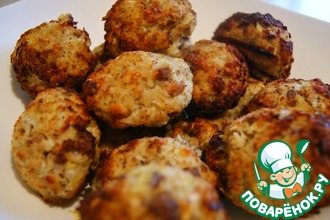
With the advent of an air fryer in our house, the whole family began experimenting with cooking all sorts of different dishes from meat and vegetables in it. And lately we have become interested in grilled fish. But despite the fact that this is already easy (no need to stand at the stove), we have simplified the task even more with ready-made minced fish. Try it! I recommend to all
